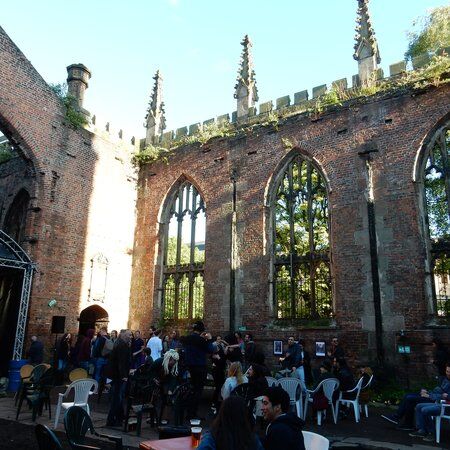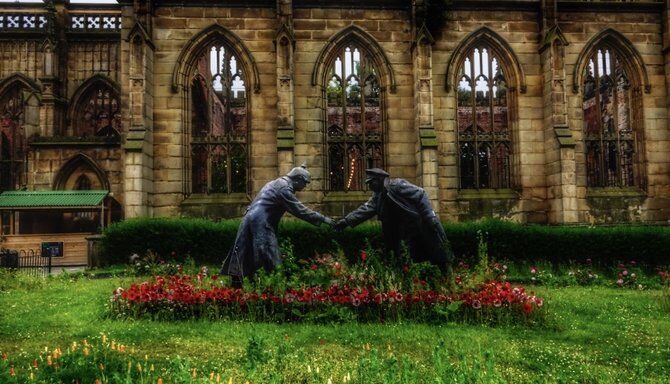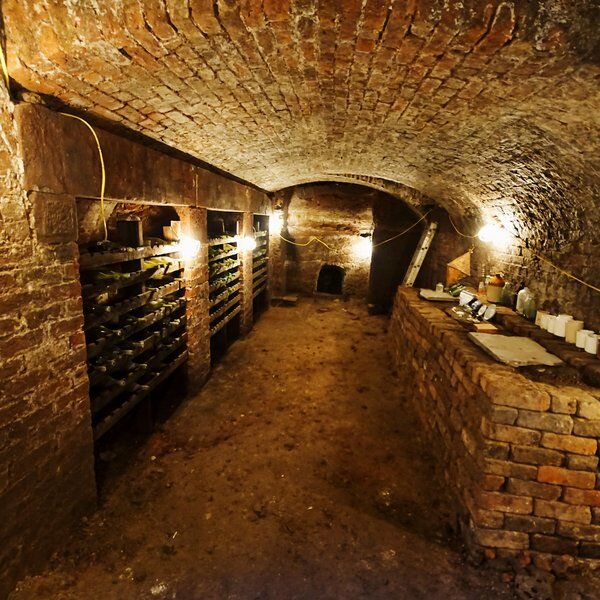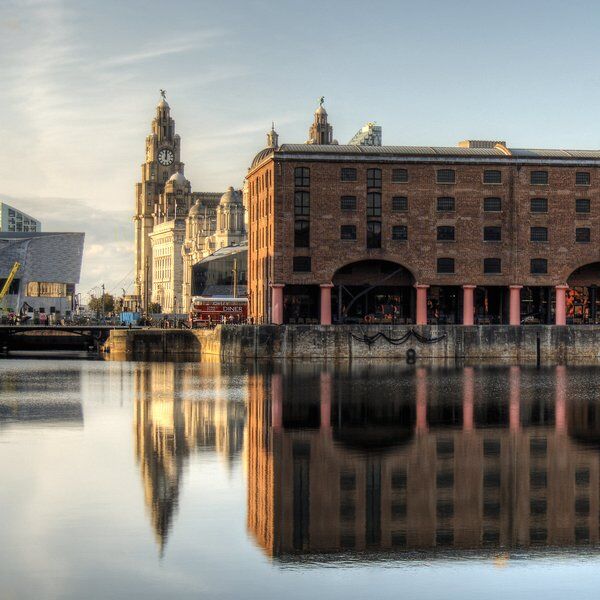
Exploring St Luke’s Bombed Out Church
"St Luke's church... is just a shell that has been burnt out. The water mains went and they couldn't do anything, the firemen couldn't fight the fire, they had no water."
St. Luke’s Church, affectionately dubbed the Bombed Out Church by locals, overlooks Bold Street in Liverpool. Its name stems from the devastating events of World War II, which left the church in ruins, without a roof, and only its external masonry surviving. Left abandoned and overgrown for over six decades, the site has since been revitalised as a community hub, holding many events throughout the annual calendar, including craft fairs and music performances. Designated a Grade II* listed building in 1975, St. Luke's remains a cherished landmark in the city. Furthermore, the roofless shell also acts as a memorial to those who lost their lives during the war.

The History of St Luke’s Bombed Out Church
The origins of St. Luke's Bombed Out Church in Liverpool date back to 1791 when the Earl of Derby granted the land specifically for the construction of a church. Designed by John Foster Senior in the early 19th century, the church's construction commenced in 1811 but faced delays due to a legal dispute over land, resuming in 1826 under the supervision of John Foster Junior after his father's passing in 1827. When it was finally consecrated in 1831, the church earned the moniker "the doctors' church" due to its proximity to Rodney Street, a place of medical professionals.

The Attack on St Luke’s Bombed Out Church
World War II Bombing
During World War II, Britain faced extensive aerial bombing from the German Luftwaffe, known as The Blitz. Liverpool, a major port and industrial city, became a prime target due to its strategic significance. The River Mersey served as a vital gateway for allied supplies, making Liverpool a crucial element in the British war effort.
However, this only brought devastation to Liverpool. Between August 1940 and January 1942, the city endured approximately 80 air raids. The attacks resulted in over 4,000 civilian deaths, the destruction of over 10,000 homes, and left more than 70,000 people homeless.

The May Blitz and the Church
However, some of the worst onslaught came during the May Blitz of 1941. This week-long onslaught, from May 1st to May 8th, saw relentless bombing that ravaged Liverpool. During the devastation, St. Luke's was struck by an incendiary bomb on May 6th, resulting in a fierce fire that consumed much of the interior and roof structure while leaving the masonry shell standing.
The church's fate during the May Blitz is poignantly captured in accounts of eyewitnesses, like the unnamed BBC employee who described the scene of devastation. Despite efforts by firefighters, the blaze consumed St. Luke's, leaving it a hollow ruin. The attack on Liverpool during the May Blitz was one of the most concentrated outside of London, with significant damage inflicted on the city's infrastructure and key landmarks such as St Luke’s and the Liverpool Central Library.

The Architecture of St Luke’s Church
As bombs descended, the entire roof and the arcades separating the two aisles from the five-bay nave succumbed to destruction. The loss extended to the tower's roof and the intricate stained glass windows, now only remnants of their former glory.
The devastating fire that accompanied the bombardment, claimed not only the roof but also the church's prized possessions—a ring of eight bells, a clock, and a majestic three-manual pipe organ, each a testament to craftsmanship and devotion.

The Remaining Structure
Despite its wartime battle wounds St. Luke’s Church endured and John Foster Junior's vision, realised in gothic-style cast iron railings and sandstone plinth walls, remains a beautiful example of craftsmanship. Other surviving elements include a cast iron bell frame, created in 1828 by George Gilliband, hailed as the world's first of its kind. The Church also continues to be surrounded by gardens, present since 1885. Inside there are remains of a brick chancel arch, fragments of stained glass, and a crypt shrouded in mystery, inaccessible yet holding secrets of bygone eras.
Inside the churchyard lies the Irish Famine Memorial, sculpted by Éamonn O'Docherty, honouring the lives lost in the famine, and Andy Edwards' "All Together Now" sculpture, which symbolises unity in conflict.

Transforming St. Luke's Bombed Out Church
Post War Proposals
Despite surviving the war, the church faced an uncertain future. However, in the 1950s, the Bishop of Liverpool advocated to preserve the church in its bombed-out state as a permanent memorial to those who perished in the conflict. Consequently, in June 1952, St. Luke's and its surrounding railings were designated Grade II listed. Over time, the site became known colloquially as "The Bombed Out Church," and was a symbol of Liverpool's wartime sacrifice.

Throughout the decades, St. Luke's remained largely derelict until the early 2000s when community-driven initiatives breathed new life into the space and it reopened in 2007 as a cultural hub hosting events that ranged from weddings and outdoor cinemas to theatrical performances.
Urban Strawberry Lunch played a crucial role in maintaining and organising events at St. Luke's from 2007 to 2014. Following this, Ambrose Reynolds and other community members formed the 'Bombed Out Church' organisation in 2014. From here, further restoration plans were initiated to address the deteriorating stonework and add a roof to the south tower vestry. The meticulous repair work spanned two years, culminating in the church's reopening in 2017.

The Garden Bar and Café
Among the 2015 restoration plans were proposals for an onsite cafe, aimed at enhancing the visitor experience while generating crucial income for the site's maintenance. Fast forward to June 2020, and this vision became a reality with the launch of the Bombed Out Church Garden Bar and Café.
With its enticing array of drinks and welcoming ambiance, the Garden Bar and Café quickly became a hotspot for locals and tourists. Offering a unique opportunity to engage with the historic church and its surroundings, the establishment not only served as a place of relaxation but also supported the upkeep of St. Luke's.

Explore Liverpool with CityDays
The best way to discover more hidden gems around Liverpool is to take your time and, ideally, have a pre-planned route that takes you past all the noteworthy nooks and hidden gems.
We can help you there!
Our brand-new routes, The Port That Rocked and Evolution of An Icon combine the fun of an outdoor treasure hunt with the historic facts and whimsical trivia of a walking tour.
Answer riddles, solve puzzles and learn more about Liverpool's history in a new and interactive way!
Take the stress out of planning your visit to Liverpool and book your adventure today!
Not visiting Liverpool this time? Don’t worry, you’ll find us all over the world.

















